By Dimitri Kadic MVM, DES, DACVS, DECVS
Photography: Courtesy Equitom
With the foaling season in full swing, we are inevitably confronted with leg abnormalities in our foal population. Some of these abnormalities are already visible at birth (congenital). Others arise in the first weeks or months after birth.
As a horse owner, it is important to be aware of these problems so that you can recognise an occurring problem in your foal at an early stage. Fortunately, there are solutions for most of these defects if the right treatment is instated in time.
Two different type of limb deviations are seen. Flexural limb deformities are limb deviations in the sagittal plane. On the other hand, angular limb deformities are abnormal stances in the frontal plane.
Flexural limb deformities
Weak foals or foals that are born prematurely often lack sufficiently strong flexor tendons and ligaments (hyperlaxity), causing them to sag too deeply through their fetlock joints and also making the hock unstable. This defect often occurs to a mild degree in newborn foals and therefore gradually disappears as the foal gets older and stronger (image 1). It is important in these foals to limit their movement and control it until a correct position is obtained. A spacious box and/or small paddock are ideal.
Sometimes the laxity is so bad that the toes point upwards. In such cases, it is best to let an experienced farrier place a plastic shoe with an extended heel under the hoof. This will act as a lever so that the foal will put the foot nice and flat on the ground (images 2 a and b and images 3a and b). Plastering the leg or even placing a support bandage will further weaken the tendons and worsen the condition.
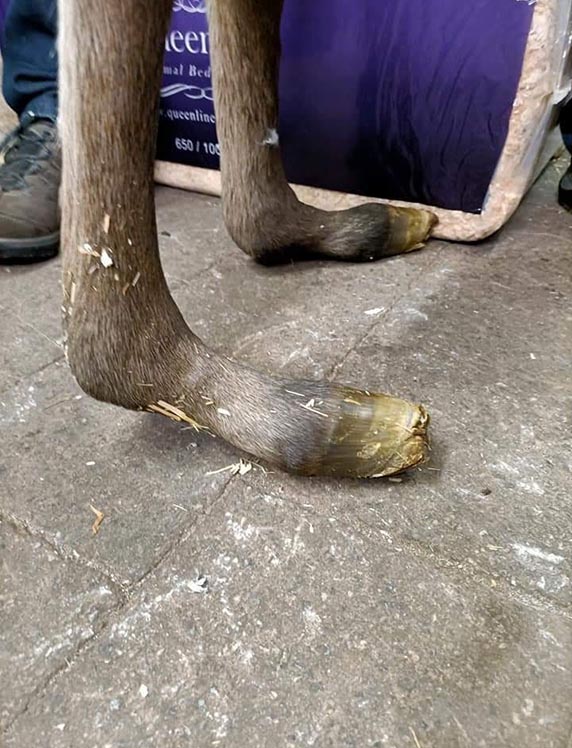
This foal shows obvious laxity (weakness) of the flexor tendons. In such cases, the foal should be kept in a stall to gain strength and an orthopaedic shoe should be placed if the toe tips upwards.
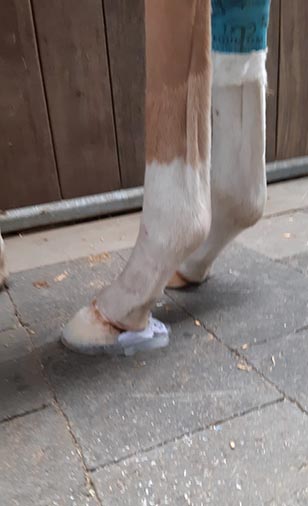
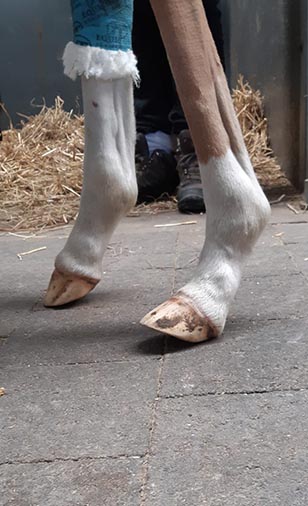
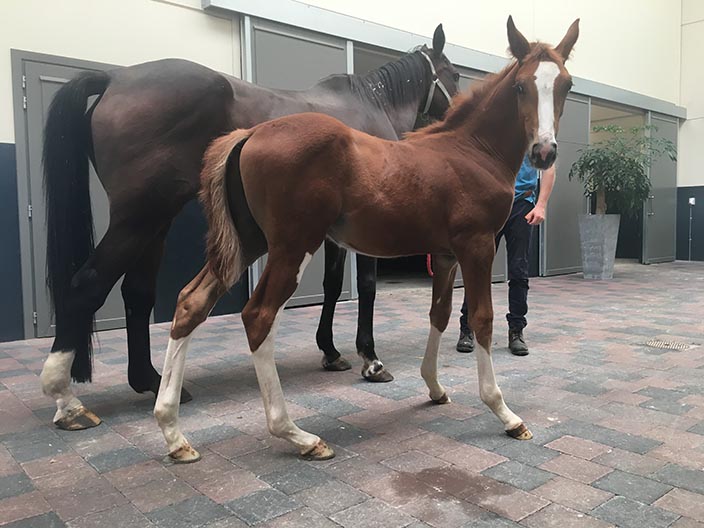
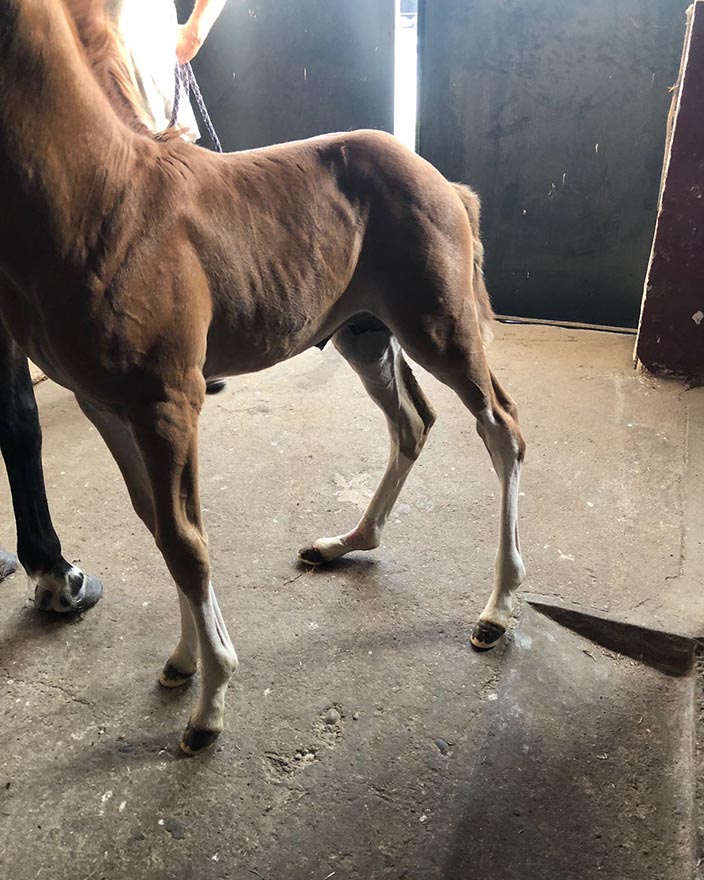
Image 3a and 3b This foal also has a weakness at the level of the flexor tendons in combination with crooked hindquarters. The foal was treated with shoes with heel extension. The crooked hindquarters grew straight spontaneously.
On the other hand, the flexor tendons in foals can also be too short, making leg extension difficult. Consequently, these foals have crooked/contracted legs. This is referred to as tendon retraction. Foals can be born with this, or it can also occur later in life. The foal in image 4 had both front legs folded in the womb. At birth, the front knees were stuck at an angle of almost 90°, which were impossible to stretch manually. Besides too short tendons, the joint itself, in a hyperflexed state, is also stiffened. Consequently, these foals are usually difficult to be born via the normal way and a caesarean section is often necessary.

Photo 4: This foal was born with both front knees bent 90°. Not only the tendons but also the joints have retracted and this as a result of an abnormal position in the womb. Only aggressive surgery could help this foal.
The treatment of tendon retractions depends on the degree/severity of the problem (image 6). If the foal cannot stand up spontaneously because the leg is too crooked, a splint or cast will have to be applied in hyperextension, such that the foal can still stand up this way. It is important that the foal walks around on the affected leg so that the tendon gradually stretches more and more.
The foal in image 5 has a buck-legged position due to a retraction of the tendons at the level of the carpus. Physiotherapy by regular manually pushing the front knees backwards combined with splinting are important measures for treating this abnormality. In foals that do not respond adequately to this therapy, surgery is necessary.

Foal with ‘buck-legged’ position as a result of a tendon retraction at the level of the carpus.
A useful and efficient tool in the treatment of tendon retraction in newborn foals is the 'oxytetracycin infusion'. This medication will relax the tendons and most foals straighten up with it within three days. This medication works especially well in very young foals and can be combined with a splint bandage or cast... To read the complete article you need to be a subscriber
CLICK HERE TO SUBSCRIBE TO BREEDING NEWS
SUBSCRIBERS CAN READ THE COMPLETE ARTICLE BY LOGGING IN AND RETURNING TO THIS PAGE




